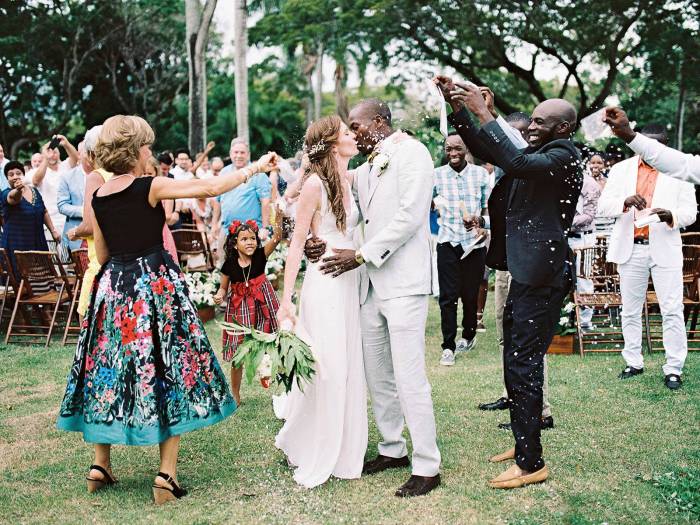Wedding traditions in dominican republic – Delving into the rich cultural heritage of the Dominican Republic, this discourse explores the captivating wedding traditions that have been passed down through generations. From the symbolic engagement practices to the vibrant reception festivities, these customs paint a vivid portrait of the country’s unique identity and deep-rooted values.
The Dominican Republic’s wedding traditions are a captivating blend of Spanish, African, and Taino influences, each contributing to the vibrant tapestry of rituals and celebrations that characterize these special occasions.
Engagement Traditions
Dominican engagement practices are steeped in tradition and symbolism. The “pedida de mano” ceremony, a formal request for the bride’s hand in marriage, is a pivotal moment. The groom’s family visits the bride’s home, bearing gifts and expressing their desire for union.
The exchange of rings and other symbols during the engagement period signifies the couple’s commitment and future bond.
Wedding Attire and Accessories

Traditional Dominican wedding attire holds deep cultural significance. The bride typically wears a white or ivory gown adorned with intricate embroidery and lace. The groom wears a formal suit, often accompanied by a traditional “guayabera” shirt. The veil, headpiece, and bouquet are imbued with symbolism, representing purity, love, and fertility.
Dominican wedding jewelry, featuring gold and precious stones, adds elegance and cultural flair to the ensemble.
Ceremony Customs and Rituals

Dominican wedding ceremonies follow a structured order of events. The officiant, typically a priest or civil servant, presides over the ceremony, while the “padrinos” (sponsors) serve as witnesses and advisors. Unique rituals include the “arras” (exchange of coins), symbolizing the couple’s shared financial responsibilities, and the “velacion” (veiling), representing the union of the couple before God.
Reception Traditions and Entertainment

The Dominican wedding reception is a vibrant celebration. Guests enjoy traditional dishes such as “lechón asado” (roast pork) and “sancocho” (stew). Music plays a central role, with merengue and bachata rhythms setting the lively atmosphere. The “merengue” dance is a highlight, representing the couple’s joy and unity.
Cultural Influences on Traditions
Dominican wedding traditions have been shaped by a blend of Spanish, African, and Taino cultures. Spanish influence is evident in the formal attire, religious ceremonies, and music. African traditions contribute to the lively rhythms and dance styles, while Taino influences can be seen in the use of natural elements and symbolic rituals.
Modern Adaptations and Trends
Dominican wedding traditions have evolved over time to reflect changing social and cultural norms. Contemporary trends include the incorporation of non-traditional elements, such as destination weddings and personalized vows. However, the core traditions and rituals remain deeply ingrained in the Dominican wedding experience.
Key Questions Answered: Wedding Traditions In Dominican Republic
What is the significance of the “pedida de mano” ceremony in Dominican engagements?
The “pedida de mano” is a formal request for the bride’s hand in marriage, where the groom and his family visit the bride’s family to seek their blessing and consent.
What is the traditional wedding attire worn by the bride and groom in the Dominican Republic?
The bride typically wears a white gown, while the groom wears a black or white suit. Both outfits may incorporate traditional Dominican embroidery and lace.
What is the role of the “padrinos” in a Dominican wedding ceremony?
The “padrinos” are the godparents or sponsors of the couple, who play a significant role in the ceremony, providing guidance and support to the newlyweds.